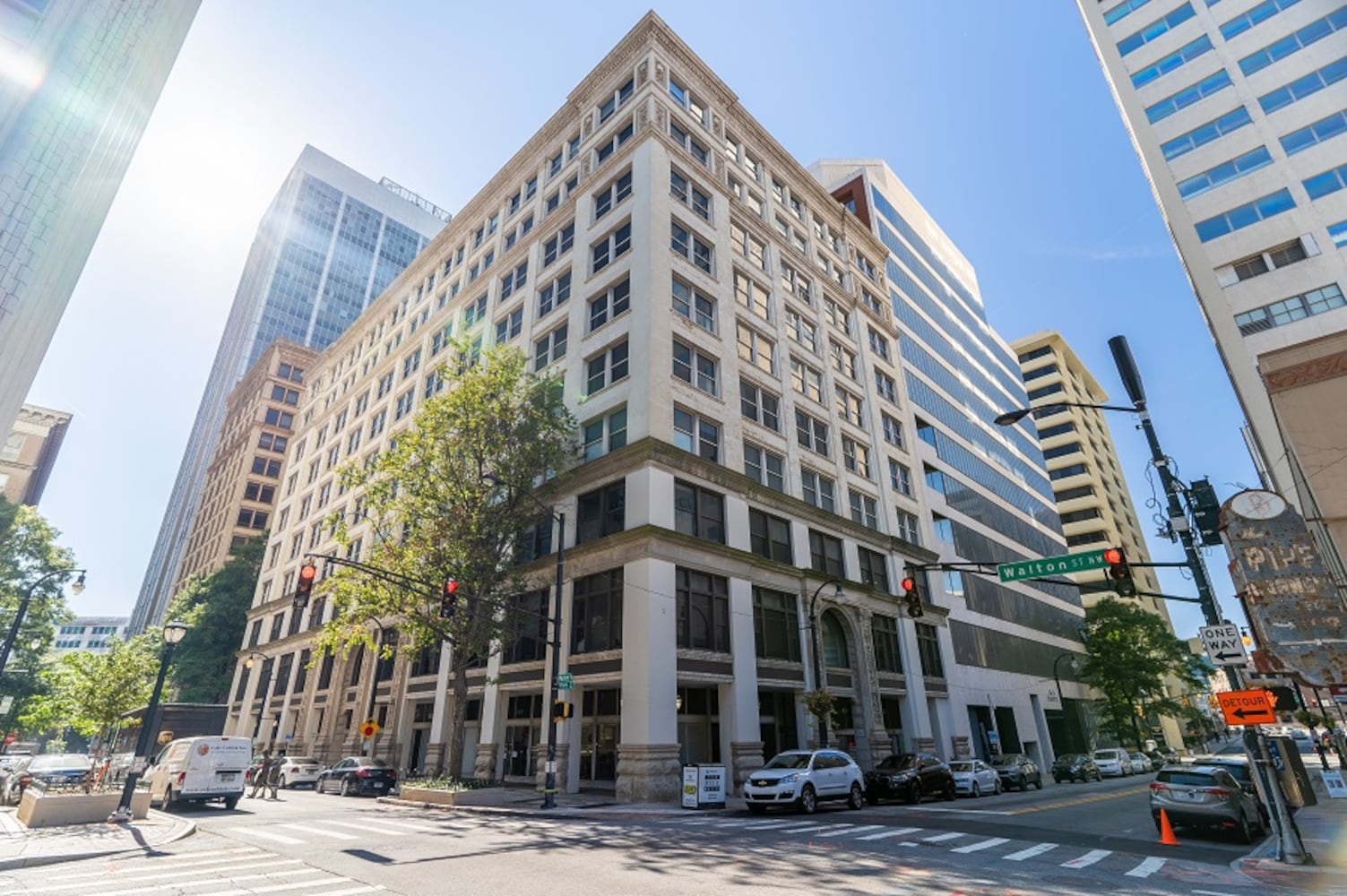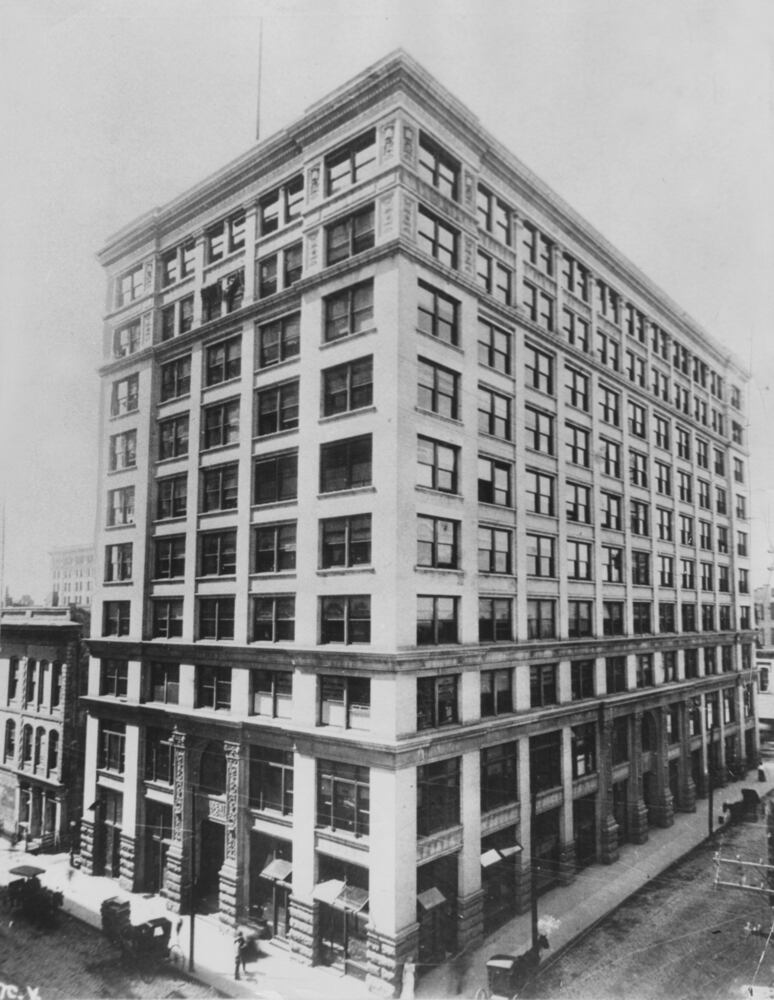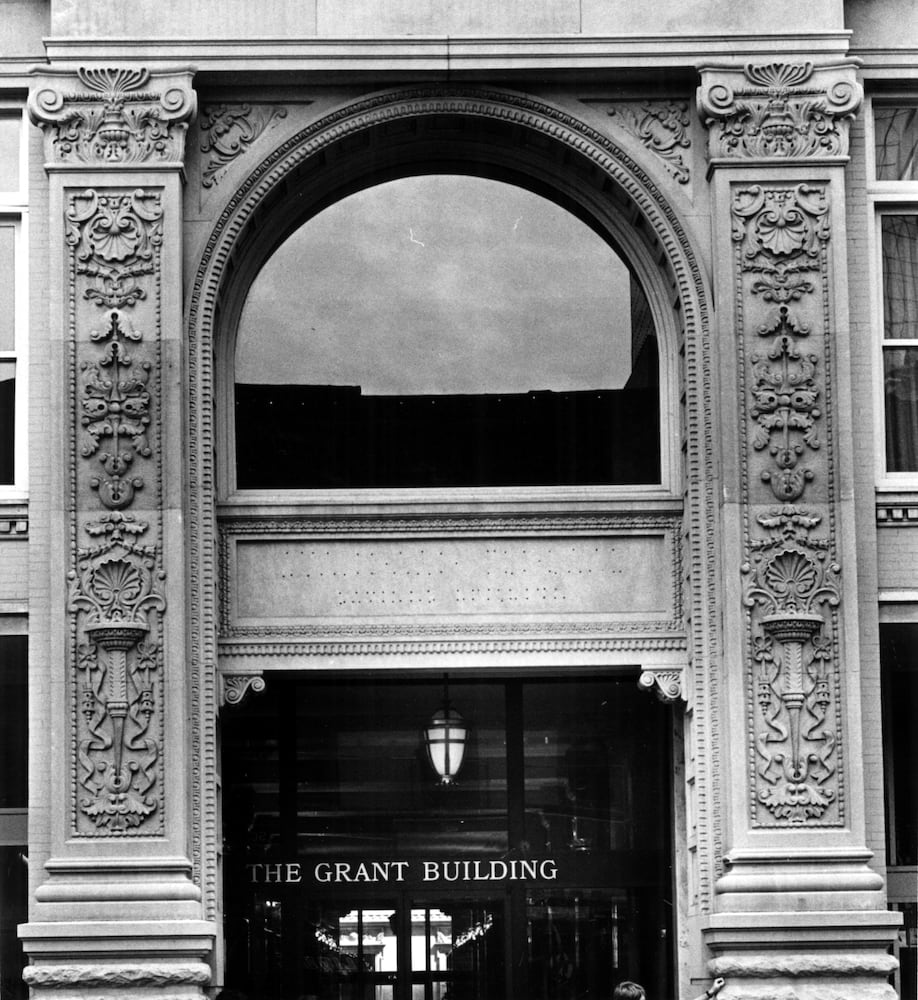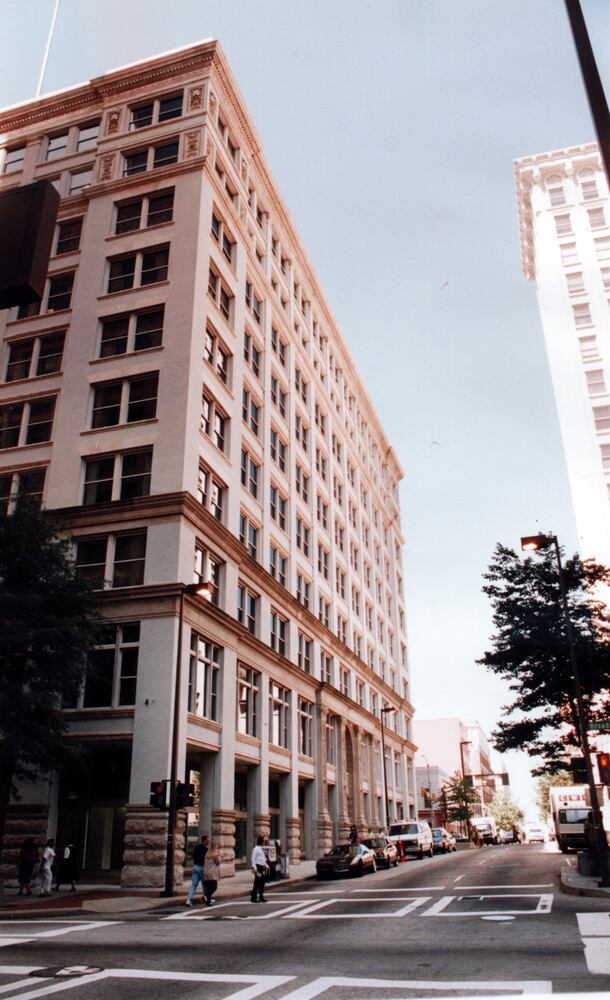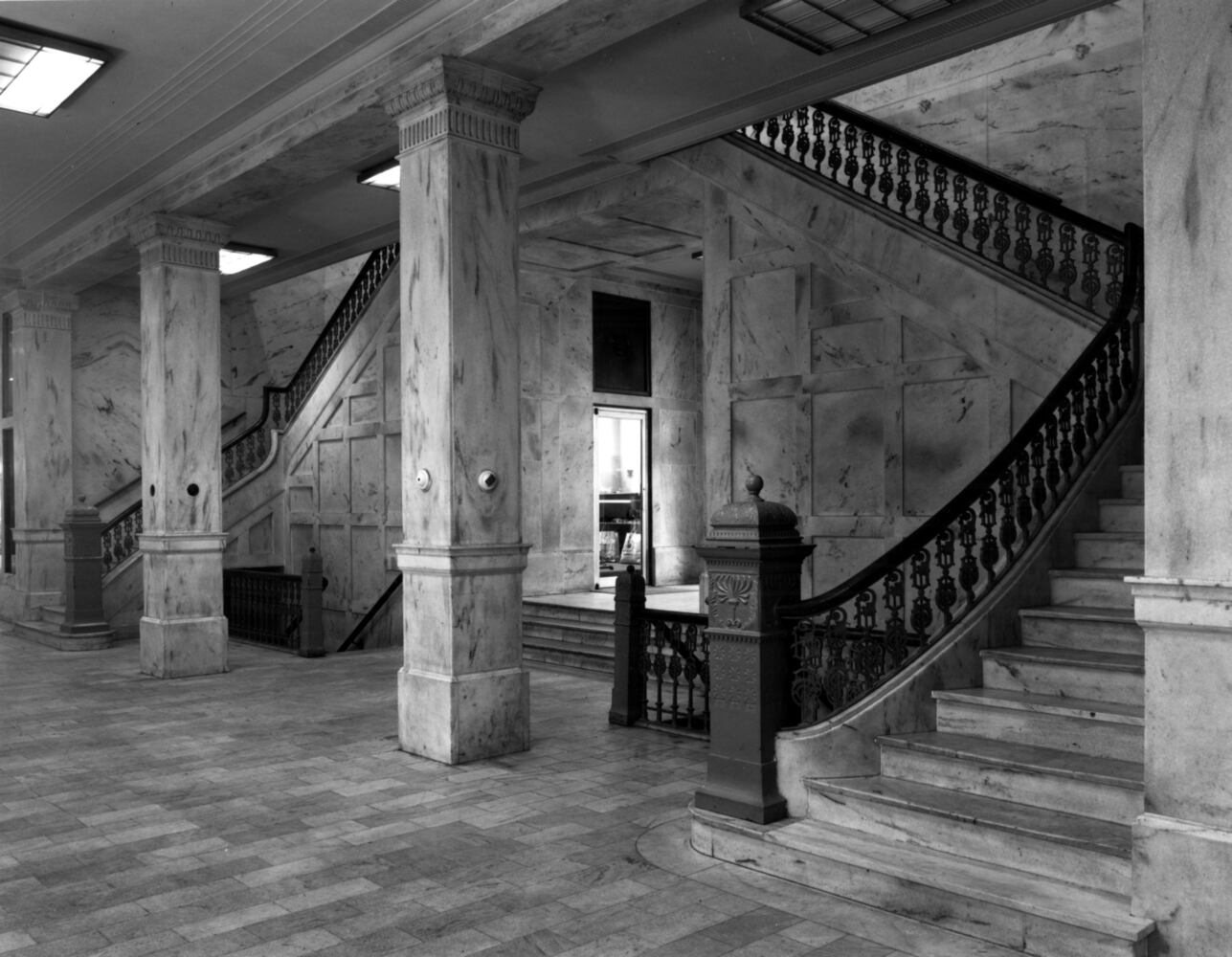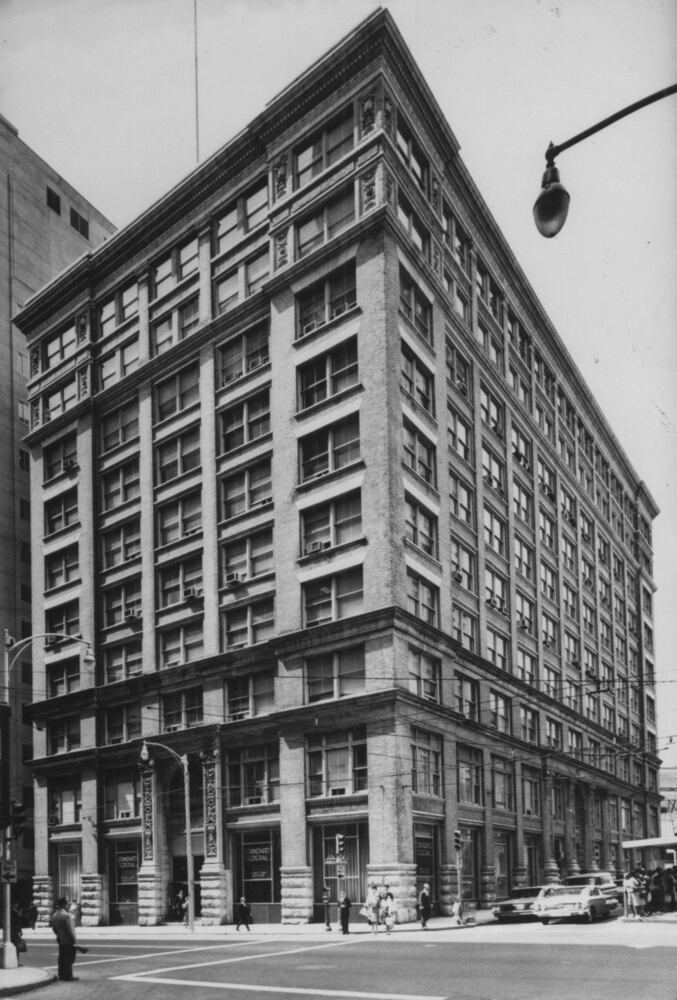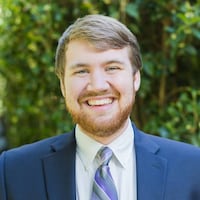It takes a sledgehammer — several actually — to turn one of Atlanta’s oldest office buildings into new homes for downtown residents.
A Texas-based development team broke ground recently on its residential conversion of the historic 10-story W.D. Grant Building off Broad Street. The top seven floors of the city’s oldest steel structure building will become 165 apartments once the current offices are stripped down to the studs — hence the sledgehammers.
The 125-year-old building is one of downtown Atlanta’s most prominent adaptive reuse projects aiming to replace the city’s outdated and empty office stock with much-needed housing. Given the age of the Grant Building, it’s also an attempt to preserve the city’s history by breathing new life into one of its most architecturally significant structures.
“There’s so much detailed craftsmanship that went into the building back in 1898,” said Kenny Wolfe, owner of Wolfe Investments. “It’s really impressive. They don’t do it like that anymore.”
Credit: Zachary Hansen
Credit: Zachary Hansen
Located in downtown’s Fairlie-Poplar district, the roughly 125,000-square-foot building has been on the National Register of Historic Places since 1979. The lobby’s floor and walls are marble, with ornate steel handrails lining the ground-floor’s staircases.
David Mitchell, executive director of the Atlanta Preservation Center, said the Grant Building introduced Chicago-style architectural design to Atlanta, adding that the building was the first to take up an entire city block. He said the building’s facade and character are not only important to preserve but will entice future residents.
“Generally by amenities today, so many of them are modern — gyms, swimming pools, all these things,” Mitchell said. “However, culture, beauty, art, integrity and identity are also amenities. When you walk in that lobby, you’re defining who and what you are to a certain degree by supporting the beauty of that space.”
Credit: Zachary Hansen
Credit: Zachary Hansen
Wolfe Investments and Bluelofts Inc. acquired the Grant Building in December through a joint partnership that was facilitated by Colliers. The ground floor will include the lobby and retail space while the second floor will remain offices, Kenny Wolfe said.
The 165 units will mostly consist of studios and one-bedroom units, which Wolfe said will have a hotel-type feel. He said the conversion should take about 18 months, and all units will be offered at market-rate rents.
Wolfe said his company is involved in 11 adaptive reuse projects across the country, totaling more than 2.2 million square feet of space. This includes 41 Marietta Street, an old bank building next to the Grant Building undergoing a transformation into 120 multifamily units. It’s expected to open in February.
In addition to the Grant Building’s character, residents will also have access to more traditional amenities, including a clubhouse, a business center, a fitness center, a private spa and lounge space. Because the building was constructed before automobiles were commonplace, parking infrastructure will have to be added on an adjacent lot.
“Like many older buildings, it has great bones and good character, so it’ll make an interesting place to live,” said A.J. Robinson, president of the downtown civic organization Central Atlanta Progress.
In March, the organization issued a request for proposals seeking a consultant for guidance on how to convert old office towers into housing, a trend that’s gaining traction nationally because of the COVID-19 pandemic’s effects on the office market.
The city of Atlanta is also exploring the idea by recently purchasing the 41-story 2 Peachtree Street office tower to convert into hundreds of housing units. Such projects, along with several new downtown residential buildings, promise to add life to downtown streets.
“As we continue to look at how we’re going to repurpose older structures and make them viable again, this is a really wonderful example,” Mitchell said. “It’s a glaring example of why older things ground spaces, neighborhoods, communities and people.”
About the Author
Keep Reading
The Latest
Featured
